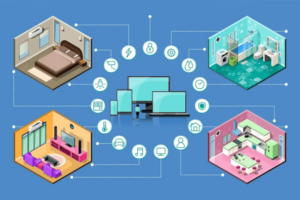Presenting and settling of bills- The process of presenting and settling bills typically refers to the steps involved in submitting invoices for goods or services rendered and then making payments to fulfill those financial obligations. Here’s a general overview of the process:
Presenting Bills:
- Generate Invoice:
- Create a detailed invoice that includes information such as the date, invoice number, your business details, the recipient’s details, a description of the products or services provided, quantity, unit price, total amount, and any applicable taxes.
- Send Invoice:
- Transmit the invoice to the customer or client through the agreed-upon method, which may include email, a customer portal, or traditional mail.
- Follow Up:
- If the payment is not received by the due date, follow up with the customer through reminders or inquiries to ensure prompt payment.
Settling Bills:
- Review Invoice:
- Upon receiving the invoice, the recipient should carefully review it to verify the accuracy of the details and ensure that the products or services were delivered as expected.
- Payment Terms:
- Adhere to the agreed-upon payment terms, which could include the payment due date, any early payment discounts, or any late payment fees.
- Payment Method:
- Choose an appropriate payment method (e.g., wire transfer, credit card, check) based on the terms outlined in the invoice.
- Record Keeping:
- Keep records of all transactions, including invoices and proof of payments, for financial and auditing purposes.
Additional Considerations:
- Terms and Conditions:
- Clearly communicate payment terms and conditions in your initial agreements or contracts to avoid misunderstandings.
- Late Payments:
- Implement a policy for handling late payments, including any penalties or interest charges, and communicate this policy to clients.
- Automation:
- Consider using accounting software or invoicing tools to streamline the billing process and help track payments.
- Communication:
- Maintain open communication with clients or vendors to address any issues or concerns related to billing promptly.
By following these steps and maintaining clear communication, both parties can ensure a smooth and efficient process for presenting and settling bills.
What is Presenting and settling of bills
The presenting and settling of bills refer to the processes involved in submitting invoices for products or services and then making payments for those invoices. Here’s a breakdown of each component:
- Presenting Bills:
- Generation of Invoice: Businesses generate invoices to document the details of a transaction. This includes information such as the date of the transaction, a unique invoice number, details of the products or services provided, quantity, unit price, total amount, any applicable taxes, and the payment terms.
- Delivery of Invoice: Invoices are sent to the customer or client. This can be done through various means, such as email, postal mail, or electronic invoicing systems.
- Settling Bills:
- Invoice Review: Upon receiving the invoice, the recipient reviews it to ensure that it accurately reflects the products or services received, and the terms of the transaction are as agreed upon.
- Payment: The recipient makes the payment for the goods or services according to the terms specified in the invoice. Payment can be made through various methods such as cash, check, credit card, or electronic funds transfer.
- Record Keeping: Both the issuer and the recipient maintain records of the transaction, including the invoice and proof of payment. This documentation is crucial for accounting, auditing, and financial management purposes.
The entire process is part of the broader financial and business operations, ensuring that transactions are documented, payments are made promptly, and records are maintained accurately. Effective management of the presenting and settling of bills is essential for maintaining healthy financial relationships between businesses and their clients or customers. It also plays a crucial role in the overall financial health and stability of organizations.
Who is Required Presenting and settling of bills
Presenting and settling of bills are essential processes for various entities, including businesses, service providers, and individuals engaged in commercial transactions. Here are the key stakeholders who are typically involved in presenting and settling bills:
- Businesses:
- Product Sellers: Businesses that sell physical goods generate invoices for the products they deliver to customers.
- Service Providers: Companies offering services, such as consulting or maintenance, present invoices for the services rendered.
- Freelancers: Individuals providing freelance services generate invoices for their clients.
- Service Providers:
- Utilities: Companies providing utilities like electricity, water, and gas generate bills for the services provided to customers.
- Telecommunication Providers: Phone, internet, and cable service providers issue bills for their services.
- Landlords and Property Managers:
- Individuals or companies renting out properties present bills (often referred to as rent invoices) to tenants.
- Financial Institutions:
- Banks and other financial institutions present statements and bills related to loans, credit cards, or other financial services.
- Government Agencies:
- Government entities may issue bills for taxes, fines, or fees related to specific services.
- Individual Consumers:
- Individuals may present bills to others for personal services, such as childcare, tutoring, or home repairs.
- Nonprofit Organizations:
- Nonprofits may present bills for services received or donations made.
- Educational Institutions:
- Schools, colleges, and universities may generate bills for tuition, fees, and other educational services.
In summary, presenting and settling bills are fundamental processes in various sectors and industries. They involve any situation where goods are sold, services are provided, or financial transactions occur. Proper management of these processes is crucial for maintaining financial transparency, facilitating timely payments, and ensuring smooth business or personal transactions.
When is Required Presenting and settling of bills

The presenting and settling of bills are required at various points in commercial transactions, service agreements, and financial dealings. Here are some common situations when presenting and settling bills are necessary:
- After Goods or Services are Provided:
- Business Transactions: Invoices are typically generated and presented after goods are delivered or services are rendered. This is common in B2B (business-to-business) and B2C (business-to-consumer) transactions.
- On a Regular Billing Cycle:
- Recurring Services: For services provided on an ongoing basis, such as subscription services, utilities, or rent, bills are presented regularly according to an agreed-upon billing cycle.
- Upon Completion of a Project:
- Freelancers and Contractors: Freelancers and contractors often present invoices upon completion of a project or upon achieving specific project milestones.
- At the End of a Rental Period:
- Landlords and Tenants: Rental invoices or bills are typically presented at the end of each rental period, indicating the amount due for rent and any other associated charges.
- Following Loan or Credit Transactions:
- Financial Institutions: Bills or statements are presented regularly to borrowers and credit card holders, indicating the amount due, interest charges, and other relevant information.
- For Tax Payments:
- Tax Authorities: Governments present bills for taxes owed by individuals and businesses. These bills are usually issued on a periodic basis, such as annually or quarterly.
- When Requested by a Vendor or Supplier:
- Supply Chain Transactions: In business-to-business transactions, suppliers may present bills to customers upon shipment of goods, and customers settle these bills according to agreed-upon payment terms.
- In Response to an Invoice:
- Prompt Payment: Bills are settled by customers in response to invoices within the agreed-upon payment terms. This is essential for maintaining a healthy business relationship and avoiding late payment fees.
- As Part of a Legal Agreement:
- Contractual Obligations: Bills may be presented and settled as per the terms outlined in a legally binding contract or agreement between parties.
- For Personal Services:
- Individual Transactions: Individuals may present bills for personal services, such as home repairs, tutoring, or childcare, and settle them with the clients.
In summary, presenting and settling bills are integral to various stages of business transactions, contractual agreements, and financial dealings. The timing depends on the nature of the transaction and the terms agreed upon by the parties involved. It’s essential for maintaining financial clarity, facilitating timely payments, and fostering positive relationships between parties.
Where is Required Presenting and settling of bills
The presenting and settling of bills are required in various contexts and locations where commercial transactions, services, or financial arrangements occur. Here are some common situations and places where presenting and settling bills are necessary:
- Business Environments:
- Retail Stores and Shops: Invoices or bills are presented and settled when customers make purchases.
- Wholesale Transactions: Businesses present bills to each other for bulk purchases, and payments are settled accordingly.
- Service Providers:
- Professional Services: Consultants, freelancers, and other service providers present bills for their services.
- Utilities: Utility companies present bills for services like electricity, water, gas, and telecommunications.
- Real Estate:
- Property Rentals: Landlords present bills to tenants for rent, and tenants settle these bills according to the rental agreement.
- Financial Institutions:
- Banks and Credit Card Companies: Bills or statements are presented regularly to customers for loans, credit cards, and other financial services.
- Government Entities:
- Tax Payments: Government agencies present bills for taxes owed by individuals and businesses.
- Fees and Fines: Bills are presented for various government fees, permits, or fines.
- Educational Institutions:
- Tuition and Fees: Educational institutions present bills to students for tuition, fees, and other charges.
- Online Transactions:
- E-commerce Platforms: Invoices or bills are generated for online purchases, and customers settle payments through various online payment methods.
- Contractual Agreements:
- Business Contracts: Bills may be presented and settled as per the terms outlined in legal agreements or contracts.
- Healthcare Services:
- Medical Bills: Healthcare providers present bills for medical services rendered, and patients settle payments.
- Personal Transactions:
- Individual Services: Individuals may present bills for personal services, such as gardening, tutoring, or home repairs.
- Supply Chain and Logistics:
- Shipping and Logistics: Bills are presented and settled between suppliers, manufacturers, distributors, and retailers in the supply chain.
- Subscription Services:
- Subscription-Based Businesses: Companies offering subscription services present bills regularly, and customers settle payments to continue the service.
The requirement for presenting and settling bills spans various industries, sectors, and day-to-day financial transactions. The specific locations depend on the nature of the transaction, whether it’s a physical retail store, an online platform, a service provider’s office, or other relevant places where goods and services are exchanged.
How is Required Presenting and settling of bills
The process of presenting and settling bills involves several steps and varies depending on the nature of the transaction and the entities involved. Here’s a general overview of how the presenting and settling of bills typically occur:
Presenting Bills:
- Generation of Invoice:
- Businesses, service providers, or individuals create detailed invoices that include transaction details such as date, invoice number, product or service description, quantity, unit price, total amount, and any applicable taxes.
- Delivery of Invoice:
- Invoices are sent to the recipient through the agreed-upon method, which may include email, postal mail, electronic invoicing systems, or other communication channels.
- Confirmation of Receipt:
- The sender may request confirmation of receipt or follow up to ensure that the recipient has received the invoice.
Settling Bills:
- Invoice Review:
- Upon receiving the invoice, the recipient reviews it for accuracy. This includes verifying that the products or services were received as specified in the invoice.
- Payment Terms:
- The recipient adheres to the payment terms outlined in the invoice. Payment terms may include the due date, any early payment discounts, and late payment fees.
- Payment Method:
- The recipient chooses an appropriate payment method, such as cash, check, credit card, wire transfer, or electronic funds transfer, to settle the bill.
- Payment Confirmation:
- The payer confirms that the payment has been made, and this confirmation may be communicated to the entity that presented the bill.
- Record Keeping:
- Both the bill issuer and the recipient maintain records of the transaction, including the invoice and proof of payment, for accounting and auditing purposes.
Additional Considerations:
- Communication:
- Open communication between the parties involved is crucial, especially in case of any discrepancies or issues with the invoice.
- Automation:
- Businesses may use accounting software or invoicing tools to automate the generation and sending of invoices, as well as to track payments.
- Late Payments:
- Policies for handling late payments, including any penalties or interest charges, should be communicated and applied consistently.
- Terms and Conditions:
- Clearly outlining payment terms and conditions in contracts or agreements helps avoid misunderstandings.
- Dispute Resolution:
- Establishing a process for resolving disputes related to bills ensures a fair resolution in case issues arise.
By following these steps and considering additional factors, the presenting and settling of bills can be a smooth and efficient process, fostering positive financial relationships between parties.
Case Study on Presenting and settling of bills
Streamlining Invoice Processes for XYZ Consulting Services
Background: XYZ Consulting Services is a medium-sized consulting firm specializing in providing strategic business solutions to clients across various industries. As the company experienced growth, the existing manual processes for presenting and settling bills became cumbersome, leading to delays in payments and increased administrative overhead.
Challenges:
- Manual Invoicing: Invoices were manually created using spreadsheets, leading to errors and inefficiencies.
- Late Payments: Clients occasionally missed payment deadlines, causing disruptions in cash flow.
- Limited Visibility: The lack of a centralized system made it challenging to track invoice statuses and communicate effectively with clients.
Objectives:
- Automate Invoicing: Implement an automated invoicing system to reduce errors and streamline the billing process.
- Improve Communication: Enhance communication channels with clients to minimize late payments and address concerns promptly.
- Centralized Tracking: Establish a centralized system for tracking and managing invoices to improve visibility and decision-making.
Implementation:
- Selection of Invoicing Software:
- XYZ Consulting Services researched and selected an invoicing software solution that aligned with their business needs and scalability requirements.
- Automation of Invoicing:
- The chosen software allowed for the automation of invoice generation, reducing manual errors and saving time. Templates were created to ensure consistency in billing information.
- Integration with CRM:
- The invoicing system was integrated with the customer relationship management (CRM) system to streamline client information and improve accuracy in billing.
- Implementation of Payment Reminders:
- Automated payment reminders were set up to notify clients before the due date, reducing the likelihood of late payments.
- Client Communication Portal:
- A secure client portal was introduced, allowing clients to access their invoices, view payment history, and communicate directly with the finance department.
- Training and Onboarding:
- Employees were trained on the new invoicing system, and clients were onboarded to the client portal with training materials provided for their convenience.
- Implementation of Reporting and Analytics:
- The system was configured to generate reports and analytics on billing trends, late payment patterns, and other key financial metrics, providing management with valuable insights.
Results:
- Efficiency Gains:
- Automated invoicing reduced the time spent on manual processes, allowing finance personnel to focus on higher-value tasks.
- Improved Cash Flow:
- Payment reminders and the client portal significantly reduced late payments, improving cash flow predictability.
- Enhanced Communication:
- The client portal improved communication, providing a centralized platform for addressing client inquiries and concerns promptly.
- Visibility and Decision-Making:
- The centralized tracking system improved visibility into the billing process, enabling better decision-making and strategic planning.
- Client Satisfaction:
- Clients appreciated the streamlined invoicing process, transparent communication, and the convenience offered by the client portal.
Conclusion: By embracing automation and optimizing communication channels, XYZ Consulting Services successfully transformed its presenting and settling of bills processes. The implementation of a robust invoicing system not only improved operational efficiency but also enhanced client satisfaction, demonstrating the positive impact of technology on financial workflows.
White paper on Presenting and settling of bills
Abstract: This white paper explores the challenges and opportunities associated with the presenting and settling of bills in today’s dynamic business environment. It delves into the importance of streamlined invoicing processes, the impact of technology on financial workflows, and best practices for improving efficiency and fostering positive financial relationships.
1. Introduction: In an era of rapid technological advancement and evolving business practices, the presenting and settling of bills have become critical components of effective financial management. This section outlines the significance of optimized billing processes in enhancing cash flow, reducing errors, and maintaining strong client relationships.
2. Challenges in Presenting and Settling Bills: Examining the common challenges faced by businesses, service providers, and individuals in presenting and settling bills. This includes issues such as manual invoicing errors, late payments, and limited visibility into financial transactions.
3. Technological Solutions: Exploring the role of technology in transforming the invoicing landscape. This section discusses the benefits of automated invoicing systems, the integration of billing software with other business systems, and the impact of cloud-based solutions on accessibility and collaboration.
4. Best Practices for Streamlining Processes: Outlining key best practices to optimize presenting and settling of bills. This includes the use of invoicing templates, setting up automated payment reminders, establishing client portals, and integrating invoicing systems with customer relationship management (CRM) tools.
5. Case Studies: Highlighting real-world examples of organizations that have successfully transformed their billing processes. Case studies will illustrate the challenges faced, the solutions implemented, and the tangible benefits achieved through improved invoicing and payment workflows.
6. Importance of Communication: Emphasizing the role of effective communication in the billing process. This section explores strategies for clear and transparent communication with clients, including the use of client portals, regular updates, and addressing concerns promptly.
7. Security and Compliance: Addressing the importance of data security and compliance in the handling of financial transactions. The paper discusses encryption protocols, secure client portals, and adherence to regulatory requirements to ensure the confidentiality and integrity of financial information.
8. Future Trends: Anticipating future trends in presenting and settling bills. This includes the potential impact of blockchain technology, artificial intelligence, and data analytics on further optimizing financial workflows and enhancing the overall efficiency of billing processes.
9. Conclusion: Summarizing key takeaways and highlighting the importance of adopting modern invoicing practices. The conclusion emphasizes the need for businesses and individuals to embrace technological solutions, improve communication strategies, and prioritize security and compliance in the presenting and settling of bills.
10. References: Citing relevant sources and studies that support the arguments and findings presented in the white paper.
This white paper aims to serve as a comprehensive guide for organizations and individuals seeking to enhance their financial workflows, with a particular focus on the presenting and settling of bills. It provides insights into best practices, technological solutions, and future trends that can positively impact the efficiency and effectiveness of billing processes.
Industrial Application of Presenting and settling of bills
The presenting and settling of bills have significant industrial applications across various sectors. Efficient billing processes are crucial for maintaining financial stability, fostering positive business relationships, and ensuring the smooth flow of transactions. Here are some industrial applications of presenting and settling bills:
- Manufacturing and Supply Chain:
- Presentation: Manufacturers present bills to suppliers for raw materials and components.
- Settlement: Suppliers settle invoices for delivered goods and services.
- Logistics and Transportation:
- Presentation: Logistics companies issue bills for transportation services, warehousing, and distribution.
- Settlement: Clients settle invoices for the logistics services provided.
- Energy and Utilities:
- Presentation: Utility companies present bills for electricity, water, gas, and other services.
- Settlement: Consumers settle utility bills for the services used.
- Construction Industry:
- Presentation: Construction firms present bills for materials, labor, and equipment.
- Settlement: Clients settle invoices for completed construction projects.
- Automotive Sector:
- Presentation: Automotive manufacturers present bills to suppliers for components and services.
- Settlement: Suppliers settle invoices for delivered goods and services.
- Healthcare Services:
- Presentation: Hospitals and healthcare providers present bills for medical services, treatments, and equipment.
- Settlement: Patients settle medical bills, and insurance companies may settle claims.
- Telecommunications:
- Presentation: Telecommunication companies present bills for phone, internet, and cable services.
- Settlement: Customers settle invoices for the usage of telecommunications services.
- Information Technology:
- Presentation: IT service providers present bills for software development, IT consulting, and maintenance.
- Settlement: Clients settle invoices for IT services rendered.
- Financial Services:
- Presentation: Banks and financial institutions present bills for loans, credit card services, and other financial products.
- Settlement: Customers settle bills for financial services used.
- Retail Industry:
- Presentation: Retailers present bills to suppliers for merchandise and inventory.
- Settlement: Retailers settle invoices for goods received.
- Hospitality Sector:
- Presentation: Hotels and restaurants present bills for accommodation, meals, and services.
- Settlement: Customers settle bills for hospitality services.
- Renewable Energy:
- Presentation: Renewable energy companies present bills for energy production and services.
- Settlement: Clients, including businesses and individuals, settle bills for renewable energy usage.
- Agriculture:
- Presentation: Agricultural businesses present bills for equipment, fertilizers, and services.
- Settlement: Farmers settle invoices for agricultural supplies and services.
In each of these industries, the presenting and settling of bills play a vital role in maintaining financial transparency, tracking transactions, and ensuring that parties involved in a transaction fulfill their financial obligations. Adopting efficient billing practices contributes to smoother operations, improved cash flow, and stronger business relationships.





